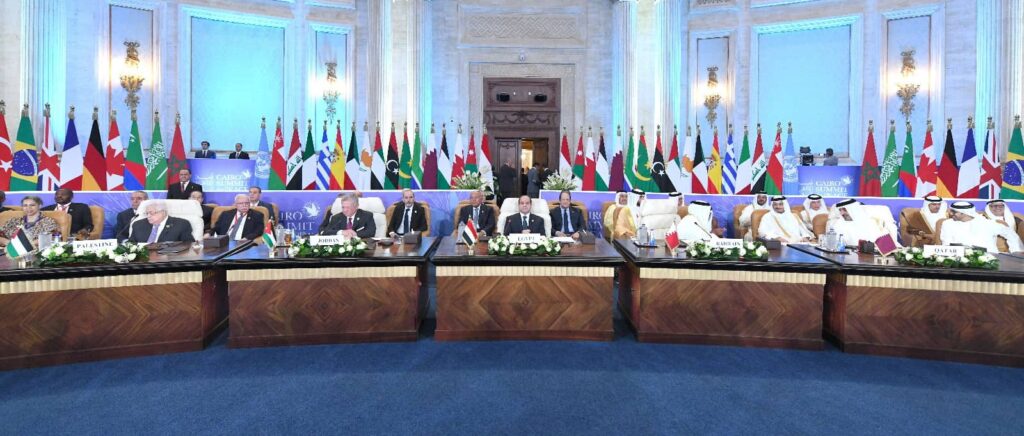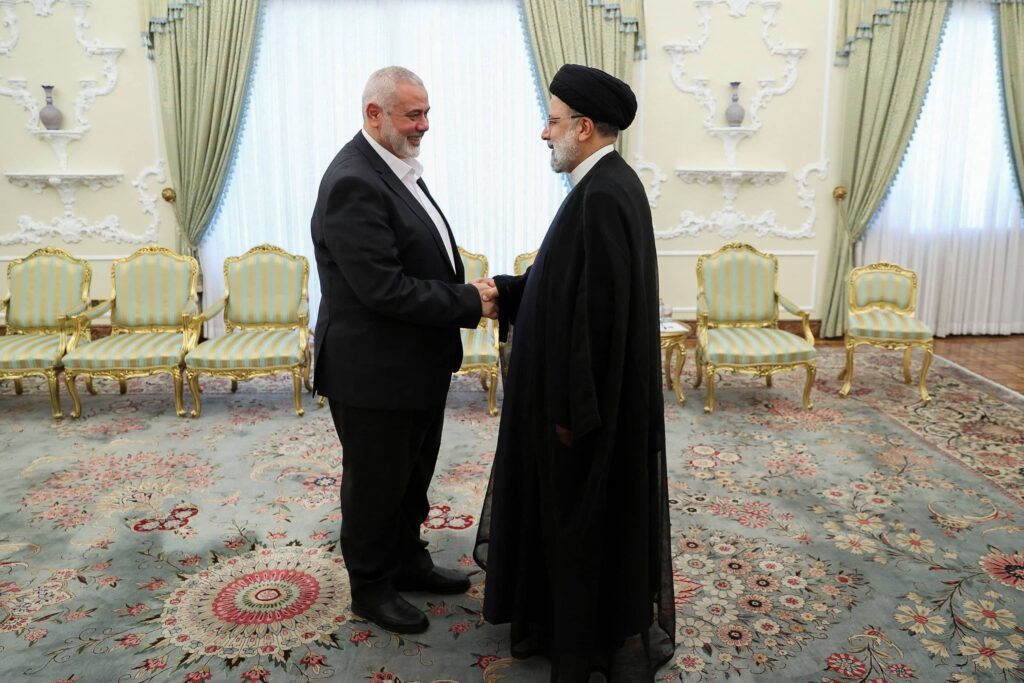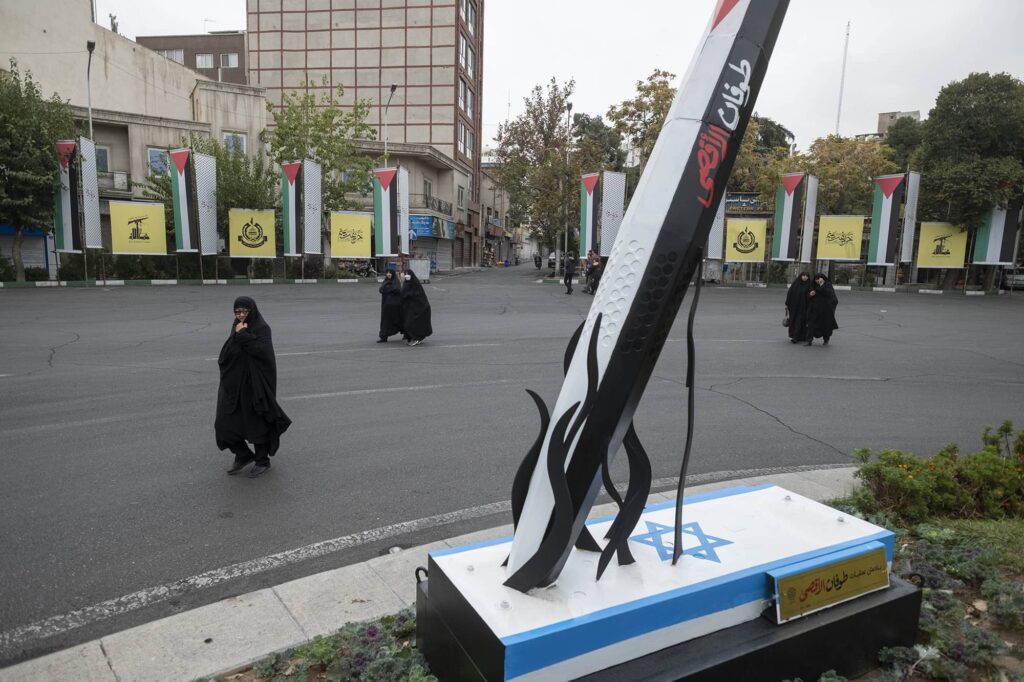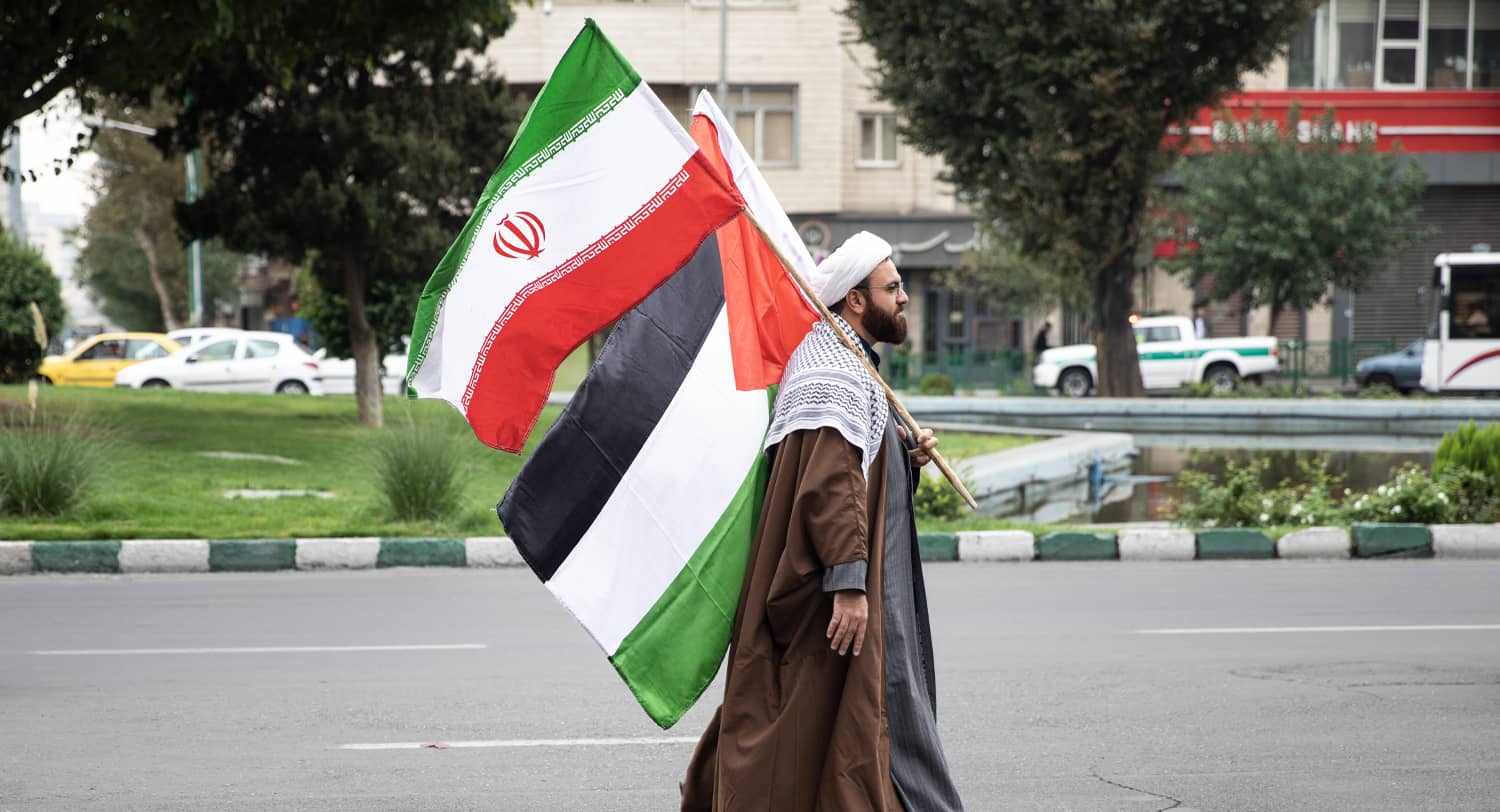Iran’s leaders seem to have concluded that the objectives of the October 7 attack – which they encouraged Hamas to undertake – were achieved in a manner that surpassed their expectations. They apparently see no need to sacrifice their most valued asset (Lebanon’s Hizbullah) in the next stage of the war. Therefore, Iran is now bent on trying to avoid getting Hizbullah, and its own forces, involved in a full-blown war with Israel.
The dramatic reinforcement of the US military presence in the region is certainly contributing to their concerns. Tehran has always regarded its Lebanese proxy – with fighting formations and arsenal of 140,000 missiles, a few hundred of which are already equipped with precision guidance – primarily as a deterrence against strikes on Iran’s own nuclear installations. They may reassess this position once the IDF starts a major ground offensive in Gaza. For now, however, their goal is to deny Israel the chance of fulfilling its commitment to destroy Hamas and remove it from governing the Gaza Strip. If Hamas maintains control of Gaza, even after suffering major punishment, Iran would consider that a great victory.
Iran’s main interest was – and remains – to prevent the US from brokering Saudi-Israeli normalization. Foreign Minister Amir Abdollahian wasted no time declaring during the first week of the war that this goal had been achieved. For his part, Prince Turki Al Faisal, former head of Saudi intelligence, has confirmed that in his view, sabotaging the deal was the aim of the operation.
The Iranians are extremely concerned that Saudi-Israeli normalization would pave the way for the establishment of a US-led security architecture in the Middle East, in which Arab and Israeli armies and intelligence services would cooperate under the direction of CENTCOM. They are worried that while they pressure American units in Iraq and Syria, hoping to see them withdrawn, the US is fortifying its supremacy in the region by forging unwritten alliances between Israel and some of the Gulf states. This was reflected during the course of the current fighting by a huge billboard in the Iranian capital reading: ”The battle zone is Tel Aviv not Tehran.”
October 7 dealt a severe blow to Israel’s image as a powerful actor, enabling Iran to pour cold water on those Arabs seeking reconciliation and collaboration with the Jewish state. Israeli intelligence was stripped of its formidable reputation, the armored units and infantry were not deployed properly for defense and the air force was not on alert. All this happened despite numerous pieces of intelligence that should have alerted Israel to the possibility of that Hamas intends to move from exercise mode to attack. Throughout the days of raging air force bombings in Gaza, and the systematic launching of hundreds of rockets every day into Israeli cities and villages, the Iranians kept quoting Hasan Nasrallah’s old description of Israel as “The House of the Spider” – weaker than cobwebs – that is slowly but surely disintegrating. The evacuation of a total of 100,000 inhabitants from towns and smaller communities in the Gaza border region and the north of Israel is interpreted by them as a precursor to the unraveling of Israel in the future.

By igniting pro-Palestinian sentiments all over the Arab world, the “Axis of Resistance” – as Iran and its allies define themselves – managed not only to stall progress on the Saudi-Israeli track but are to cause strain in the relations between Israel and its two oldest peace partners – Jordan and Egypt. Both president Abd al-Fattah Sisi and King Abdullah may soon have to bow to public calls to suspend diplomatic ties, recall ambassadors or display dismay in some other manner. In Cairo and many other cities in Egypt, demonstrators – for the first time ever – were urging Hizbullah to pound Israel with missiles and some switched to screaming “Down with Sisi” chants. In Amman the police had a hard time preventing the crowds from storming the Israeli embassy (vacant, due to precautionary instructions) and blocking protesters from reaching the border with Israel. Additional sources of potential trouble are Iranian-sponsored Iraqi Shiite militiamen gathering at the Iraq/Jordan border crossing point, demanding to be allowed “to get to the front.” On Jordan’s border with Syria, small teams of Hizbullah and other militias are setting up positions for attacks on the Golan. In the West Bank, thousands are demonstrating against president Mahmud Abbas and in support of Hamas. The PA Presidential Guard is deployed around Abbas’ compound in Ramallah,the Muqata’a, in view of classified reports of possible attempts by Hamas members together with some units of the security agencies to take over.
In the weeks preceding October 7, Iranian Revolutionary Guard Corps officers, headed by Quds Force commander General Qaeni, held secret meetings in Beirut and Damascus with Nasrallah and members of his “Jihad Council,” Hamas and Palestinian Islamic Jihad leaders. They assisted Hamas’ military wing, ”Izz al-Din al-Qassam Brigades,” in adopting a version of the plan devised for Hizbullah’s commando troops, the Radwan Force, to mount raids into Israel.
The information available to this writer from reliable sources indicates that – for reasons of secrecy – the Iranians were not advised of the zero hour or the exact scale of the attack. However, Hamas received from its Iranian interlocutors a promise to open up other fronts, though not a commitment for an all-out war by Hizbullah or Iran. It is quite telling that a fortnight after the war broke out, one of Hamas’ top leaders, Khaled Masha’al, expressed in public his disappointment with the scope of skirmishes initiated by Hizbullah, declaring that ”history is not written with hesitant, limited steps.”
The Hamas military leadership – Yahia Sinwar, Muhammad Deif and a handful of their colleagues – had to choose between opting for a limited raid to take hostages, that may later be exchanged for Hamas prisoners in Israel, or staging an offensive on a scale far bigger than ever before, all along the 70-kilometer border of walls and fences between the Gaza Strip and Israel. The Iranian promise of backing, steered them towards the more ambitious course: a brigade-size assault by their commandos, the Nukhba (“Elite”), employing motorized gliders, pick-up trucks with machine guns and motorbikes for a dawn attack on 22 villages, two towns and 11 army bases. Some of the Hamas groups penetrated 30 kilometers deep into Israel.

In addition, Hamas naval units attempted landings on the beaches near the Israeli coastal cities of Ashqelon and Ashdod. As we learned from brochures they carried with them, as well as interrogations of captured terrorists, their orders were to break into houses: all houses in all villages, take hostages and kill all others. The orders given to them were to stay for days, even weeks if possible, inside Israeli territory. Quite a few brought with them Captagon and other drugs to increase endurance, just like those that were distributed by ISIS to its men before engaging the enemy.
The Hamas military leadership decided to risk this a large-scale attack out of a desire to make sure the Israeli response would be declaring a war rather than just launching one more round of air strikes lasting at most a few weeks, without substantial ground operations. One can assume that Hamas felt that Hizbullah and Iran would be hard pressed to deliver on their promise for a multifront response, once the IDF was maneuvering into Gaza. The coming days will show whether this bet was justified.
To understand the calculations of Iran, Hamas and Hizbullah, one has to bear in mind the principles of the “Muqawwama (Resistance) Doctrine” adhered to for decades. This doctrine was refined by the late Qassem Suleimani, founder of Iran’s regional network of militias, who was assassinated by the US near Baghdad in 2020.There is no published document elaborating this doctrine, but this writer summed up its main pillars in an article in The Jerusalem Report published 17 years ago:
- Peace is not an option. The Arab world must not, because of temporary hardship, be dragged into recognizing Israel and accepting its existence through peace agreements. When in need of a respite, it is permitted to reach hudna (“armistice”) agreements, valid for a limited period only, with the “Zionist regime.” Thus both Hizbullah and Hamas could maintain long periods of calm along Israel’s borders.
- It is not necessary to wait for there to be a balance of power. Unlike Egypt’s President Nasser, who aimed to build up enough military might to beat Israel, or President Hafiz al-Asad, who sought what he called “strategic parity,” the disciples of the Muqawwama Doctrine reject any unnecessary delay in the fighting. On the contrary, even when the balance of forces is clearly in the enemy’s favor, they uphold the imperative of continual warfare, if only on a small scale. The military disadvantage can be narrowed through innovative tactics.
- Do not fight over territory. The goal of the Muqawwama is the methodical erosion of the enemy’s resolve. There is no need to defend territory against Israeli occupation, or to try to conquer land. The essence is to spill blood, and since that is the case, it is better to focus on the civilian population as the primary target. The motto is blood, not land, and the effort is directed at denying victory to the enemy, not at achieving a quick result.
- Jihad is not a national struggle. In effect, Iran and its associates in Lebanon and Palestine have reformulated the old slogans of the “Popular War of Liberation” fashioned by nationalists such as Yasser Arafat and the leaders of the Algerian revolution, and have injected it with exclusively Islamic content. Fighting is undertaken for the sake of Allah, and not out of patriotic sentiment.
- The Arab state is not a suitable vehicle. The Muqawwana is not merely a military system, but a comprehensive, alternative regime. The Arab states constitute a flawed and inefficient apparatus, unfit to conduct the historic battle. The task must be shouldered instead by the Islamic movements that, alongside their military activity, engage in societal reform through educational, health and business institutions.

By encouraging and supporting Hamas’ “Al-Aqsa Flood” operation, Iran managed to subvert, for the time being, President Biden’s vision for a broad Arab-Israeli partnership in the Middle East. Yet Israeli success in destroying Hamas’ military capabilities may turn the tables. Taking Hamas out of the regional equation would constitute a painful setback for Iran’s aspirations to become the dominant power in the Levant.
The Israeli “Swords of Iron” counter-offensive must be given ample time to carry out its mission, including its focus on minimizing losses of Israeli soldiers and Gazan civilians. No one should expect a quick campaign. The IDF can break through in few hours into the heart of Gaza and sit on top of the large tunnels network, but will not opt to send soldiers underground and has to keep in mind that hostages are held there. This dilemma may translate into attrition tactics, waiting for Hamas to exhaust its fuel supplies used to ventilate the tunnels. We may be looking at a series of major raids instead of one decisive offensive, while the air force maintains pressure by hunting down Hamas operatives and destroying infrastructure.
Whatever the tactics chosen by the IDF, the ultimate responsibility falls on the Israeli public to disprove Nasrallah’s fragile cobweb description of their society.



